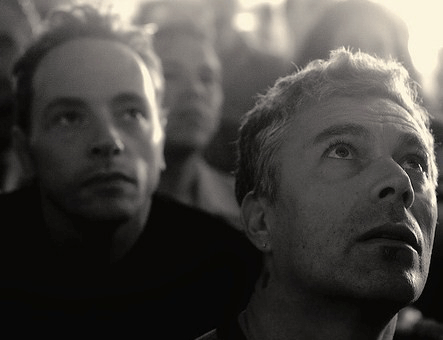How To Meditate Mindfully :
Just Watch

Acceptance
Meditation is not striving to get somewhere in the way we we usually do with most activities. In fact trying to be more relaxed, or to achieve a certain state with meditation, is likely to be counter-productive. Meditation is best practiced by letting go, with an attitude of patience, trust and acceptance of the present moment. Watching your mind and body intently, but without getting caught up in it all.
Jon Kabat Zinn, developer of Mindfulness Based Stress Reduction , likens meditation to cultivating crops ” the right attitudinal soil is required to grow anything, nothing will grow if the soil is polluted by striving or pushing too hard”.
Ekhart Tolle in his book “NOW” says, ”Surrender (acceptance) is the simple but profound wisdom of yielding rather than opposing the flow of life. The only place you can experience the flow of life is now, so to surrender is to accept the present moment unconditionally and without reservation”.
So important elements of meditation include patience, acceptance, non striving and letting go. All these attitudes are to do with not pushing or trying too hard, fully being with this moment not trying to change it, whether it is pleasant or unpleasant.
It is also important to try to be non-judgmental of whatever is experienced in meditation. This is really part of acceptance. However it is in our nature to continually judge all we see as good or bad. The aim in meditation is just to observe this judging. To watch how the mind leans either toward or away from all it encounters.
Acceptance can be practiced during meditation, by observing physical sensations, thoughts and emotions. Pain and discomfort for example can be an opportunity to practice. When sitting the usual tendency for most of us is to shift position if the slightest discomfort arises, trying to achieve a more comfortable, more pleasant position, and stop the unwanted sensations. In “Mindfulness in Plain English” the Venerable Henepola Gunaratana says, ” Once you sit, do not change the position again until the end of the time you determined at the beginning. Suppose you change your original position because it is uncomfortable, and assume another position. What happens after a while is that the new position becomes uncomfortable. Then you want another and after a while, its too becomes uncomfortable. So you may go on shifting, moving, changing one position to another the whole time you are your meditation cushion, and you may not gain a deep and meaningful level of concentration. ”
So it may be worthwhile trying not to move at the first sign of discomfort, but if possible just observing the sensations, accepting them for what they are. Accepting, surrendering to discomfort may improve it, as pain is often made worse by our anxious and tense reactions to it. Of course sometimes you do need to move during a meditation, the best way to judge when is probably simply to be mindful of what your body is telling you. For more about meditation and pain see Full Catastrophe Living by Jon Kabat-Zinn.
Observing The Mind
When we sit and look at the mind thoughts and emotions stream past. Perhaps surprisingly this seems to be the normal state for our minds. Some thoughts are pleasant, some unpleasant or painful, often dwelling on the past or looking hopefully, or anxiously to the future. As with physical discomfort the natural tendency is to retreat from anything unpleasant, to push these experiences away or suppress them (in which case they may reappear later as physical symptoms).
Here again the suggestion is to try to accept, to surrender, be with whatever comes up. To try to view thoughts and emotions with a detached interest, with equanimity. This process can be helped sometimes by visualisation. For example when you sit to meditate imagine your mind as a vast open blue sky, and any thoughts and emotions that arise as clouds drifting by. Realize that they’re in the sky (the larger mind) but not affecting it. Watch them pass by and disappear.
Paul Wilson meditation teacher, and author of “The Quiet” describes another technique. When you meditate picture yourself in a cafe looking through the window at the street. Imagine thoughts and emotions as people passing by. You look and see, but do not become involved with them. You watch them pass by out of sight. With time, when the mind is brought to thoughts and emotions in this way, their temporary insubstantial nature becomes more evident . Sometimes however this is not the case, particularly with more painful emotions. In this case it is worthwhile just trying to accept, and be with what is there for now. As Ekhart Tolle says , surrendering to whatever is present now, somehow changes it, and reduces its power over you.
– Source : meditationforthemasses.com




